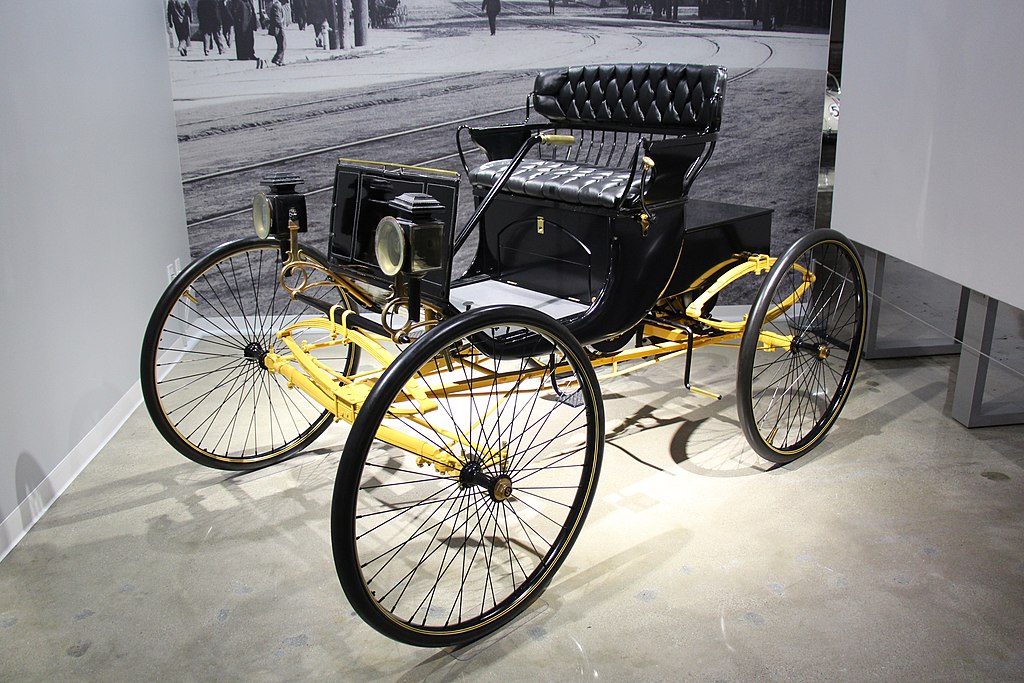
The “Belles Heures” or “The Beautiful Hours” is a beautifully illuminated manuscript book containing prayers to be said by the faithful at each canonical hour of the day.
The French Duke of Berry (French: Jean, Duc de Berry) commissioned this book in 1409 for his private use. Belle Heures was designed for his wishes and is famous because of its many lavish decorations.
The “Belles Heures” consists of a series of story-like cycles that reads like picture books. One hundred seventy-two illuminations in miniature are painted in the “Belles Heures,” mainly within rectangular borders.
However, the illuminators sometimes experimented by breaking across the boundaries to accommodate images that extending beyond the frame. The picture cycles are devoted to Christian figures or events that held particular significance for the Duke.
An unusual aspect of this specific book of hours is that unlike others, each of the cycles consists of a series of miniatures that are uninterrupted by text.
The shortest sequence, the Legend of the Cross, which consists of three miniatures, the most extended cycle, the life of St. Jerome, includes twelve miniature paintings.
The original red velvet covers with golden clasps have disappeared. However, the book remains in remarkably good condition, and the illustrations appear as vibrant and fresh as the day they were painted.
Fortunately, only the best materials were used in its creation, and it was kept for private use, so it was well protected. Also, the book was carefully preserved as a prized possession in the libraries of successive owners.
Limbourg Brothers
The artists were the Limbourg brothers, Herman, Paul, and Johan, who were famous Dutch miniature painters. They were active in the early 15th century in France and Burgundy, working in the International Gothic style.
They were known for illuminated manuscripts and miniature paintings. Unfortunately, in 1416, Jean de Berry and the three Limbourg brothers, all under 30 years old, died, possibly of the plague.
The Belles Heures remains the only complete book from the hand of the Limbourg brothers.
Belles Heures of Jean de France, Duc de Berry
- Title: Belles Heures of Jean de Berry (The Beautiful Hours)
- Artist: The Limbourg Brothers (Franco-Netherlandish, active France, by 1399–1416)
- Year: 1405–1408/1409
- Culture: French
- Geography: Paris, France
- Medium: Tempera, gold, and ink on vellum
- Dimensions: Single leaf: 9 3/8 x 6 11/16 in. (23.8 x 17 cm)
- Museum: The MET Cloisters
Limbourg Brothers
- Name: Limbourg brothers (Herman, Paul, and Johan)
- Birth: 1385
- Died: 1416
- Nationality: Dutch
- Movement: International Gothic.
- Notable works:
- Très Riches Heures du Duc de Berry
The Limbourg Brothers and the Belles Heures of Jean de France, Duc de Berry
A Tour of the Cloisters
- Annunciation Triptych (Merode Altarpiece) by Robert Campin
- The Belles Heures of Jean of France, Duke of Berry
- Palmesel
- Metropolitan Museum of Art – MET
- Met Breuer
- Christian Art
The Belles Heures of Jean de France, Duc de Berry
Explore the Metropolitan Museum of Art
MET European Paintings Collection
- “Pygmalion and Galatea” by Jean-Léon
- “Saint Jerome as Scholar” by El Greco
- “Portrait of Juan de Pareja” by Diego Velázquez
- “Camille Monet on a Garden Bench” by Claude Monet
- “View of Toledo” by El Greco
- “The Musicians” by Caravaggio
- “The Death of Socrates” by Jacques-Louis David
- “The Harvesters” by Pieter Bruegel the Elder
- “Young Woman Drawing” by Marie-Denise Villers
- “The Grand Canal, Venice” by J. M. W. Turner
- “The Houses of Parliament (Effect of Fog)” by Claude Monet
- “Madame Cézanne in a Red Dress” by Paul Cézanne
MET Modern and Contemporary Art Collection
- “Reclining Nude” by Amedeo Modigliani
- “Improvisation 27 (Garden of Love II)” by Wassily Kandinsky
- “Jeanne Hébuterne” by Amedeo Modigliani
- “The Card Players” by Paul Cézanne
- “Bathers” by Paul Cézanne
MET Greek and Roman Art Collection
- Statue of a Kouros
- Amathus Sarcophagus
- Mycenaean Terracotta Female Figures
MET Egyptian Art Collection
- The Temple of Dendur
- The Sphinx of Hatshepsut
- William the Faience Hippopotamus
Belles Heures of Jean de France, duc de Berry
MET Asian Art Collection
- Luohan – Yixian Glazed Ceramic Sculpture
- Pillow with Landscape Scenes – Zhang Family Workshop
- Jar with Dragon
MET Ancient Near Eastern Art Collection
- Sumerian Standing Male Worshiper
- Head of a Beardless Royal Attendant – Eunuch
- Human-Headed Winged Bull (Lamassu)
MET American Wing Collection
- “Washington Crossing the Delaware” by Emanuel Leutze
- “Portrait of Madame X” by John Singer Sargent
- “Mother and Child” by Mary Cassatt
- “Fur Traders Descending the Missouri” by George Caleb Bingham
- “The Gulf Stream” by Winslow Homer
MET Islamic Art Collection
- Blue Qur’an
- Marble Jar of Zayn al-Din Yahya Al-Ustadar
- The Damascus Room
MET Arts of Africa, Oceania, and the Americas Collection
- Benin Ivory Mask
- African Face Mask – Kpeliye’e
- Sican Funerary Mask – Peru
- Ceremonial Axe – Papua New Guinea
The Tres Riches Heures of Jean Duke of Berry
MET European Sculpture and Decorative Arts Collection
- “Hercules the Archer” by Antoine Bourdelle
- “Orpheus and Eurydice” by Auguste Rodin
- “Perseus with the Head of Medusa” by Antonio Canova
MET Medieval Art Collection
- “The Last Supper” by Ugolino di Nerio
- Plaque with the Journey to Emmaus and Noli Me Tangere
- Doorway from the Church of San Nicolò, San Gemini
MET Drawings and Prints Collection
- Album of Tournaments and Parades in Nuremberg
- “Canvassing for Votes” by William Hogarth
- “Christ and the Woman of Samaria” by Rembrandt
MET Costume Institute Collection
- Bodice
- Cardinal Cape
- Doublet
MET Arms and Armor Collection
- Blade and Mounting for a Sword (Katana)
- Double-Barreled Flintlock Shotgun
MET Photograph Collection
- Loie Fuller Dancing
- Sala Delle Statue, Vatican
- Gardner’s Photographic Sketchbook of the War
MET Musical Instrument Collection
- Ming-Dynasty Pipa
- Grand Piano
- Bass Fluegel Horn in B-flat
Explore the MET
- The MET Cloisters
- Met Breuer
- Metropolitan Museum of Art – MET
The Belles Heures Since the Duc de Berry
~~~
“The Study of philosophy is not that we may know what men have thought,
but what the truth of things is.“
– Thomas Aquinas
~~~
Photo Credit: Metropolitan Museum of Art [CC0], via Wikimedia Commons
Top Posts & Pages








 Sponsor your Favorite Page
Sponsor your Favorite Page SEARCH Search for: Search Follow UsJoin – The JOM Membership Program
Become a Patron!
Sponsor a Masterpiece with YOUR NAME CHOICE for $5
Share this:
- Tweet
